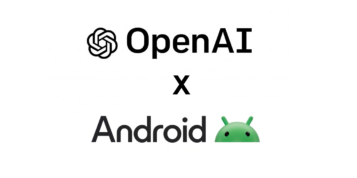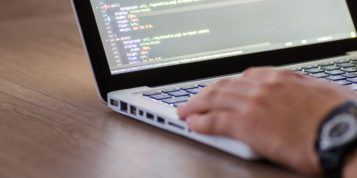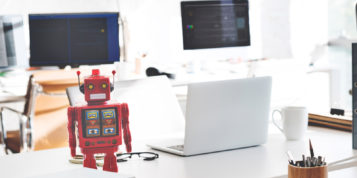From cars, to creams, to cryptocurrencies, nowadays influencer marketing has moved well into the mainstream, with 62 percent of brand marketers stating they intend to grow their budgets for this channel in 2018. But, while a recent study from Rakuten Marketing highlights that marketers are paying as much as £75,000 per post to influencers with more than one million followers, the jury is still out as to the reliability of this technique.
Keith Weed, head marketer for Unilever recently called for a ‘clean up’ of the influencer industry, questioning the transparency of influencer results due to the prevalent use of fake followers, bots, fraud and “dishonest business models.” In support of his argument, a recent study by Points North Group shows that a high number of fast moving consumer goods (FMCG) brands are being duped by influencers with fake followers.
To sidestep this issue, Prada recently enlisted the services of 19-year-old Lil Miquela, who has a following of more than 1.2 million users gained organically. But while Lil Miquela may look, dress, and chat like any other American teenager, there is a twist. She is actually an AI algorithm.
To offer themselves more transparency and control, there is a rising trend of brands adopting influencer marketing AI. So is this just a technological fad, or is AI set to take over influencer marketing as it has done with so many other industries?
What’s the appeal?
Far from spelling the downfall of influencers, the fact that brands are looking to technology to optimize transparency and performance reflects the growing importance of influencer marketing as a brand building force in the eyes of big businesses.
With the influencer industry booming, and thousands of new ‘stars’ emerging each year on a range of different channels, businesses are beginning to pay more attention to getting the right influencer to represent their brand values and mission. The fact is, finding the right influencer fit can be a challenging task for brands. There are lots of factors to consider such such as age, ethnicity, political beliefs, the size and profile of following, and previous relationships with other brands.
Also, using human influencers, brands are constantly at risk of being caught up in the negative fallout from ‘human error.’ If influencers make controversial comments, partner with other brands that don’t align with a brand’s values, or fall foul of new influencer marketer regulations from watch dogs such as the Federal Trade Commision, this can have a negative effect on brand reputation too.
Even when a brand thinks it has found someone who ticks all of the boxes, there may be creative differences as to how a brand should be featured in his or her posts. This is where the appeal of the AI-generated influencer shines through. In the near future, we are likely to see that it becomes safer, and easier to ‘develop’ an influencer that will perfectly resonate with target audiences, and not cause any PR disasters, rather than finding a real human who does the same. And it might be cheaper in the long term to program an influencer to promote as many products as you want, rather than having to pay them individually for each post they make.
Can bots give human influencers a run for their money?
However, skeptics — and human social media influencers — will undoubtedly argue that there is no way that a digital, AI-powered personality, could appeal to consumers as much as a real human.
However, a number of high profile gaffes have started to turn public opinion against ‘gun for sale’ internet sensations who make high-end salaries by touting whichever brands pay them the most. A 2018 study highlights that more than half of millennials said that they trust social media influencers less these days.
The fact is that as long as brands are open about the AI-generated nature of their influencer, and their links to their brand — in line with new FTC regulations — there is no reason that AI-powered influencers cannot be as successful as human ones.
AI is already helping brands cut out the background noise, and highlight the best influencer profiles which will resonate with their target audiences, using tools like Los Angeles-based Influencer platform Influential. Using the same kind of data-driven approach, there is no reason why brands could not design themselves AI influencers which are 100 percent in line with what their target consumers are looking for, place them on social media, and then wait for the likes and follows to start rolling in.
After all, AI-powered models are now so intelligent and realistic that they are developing full-blown rivalries with each other, as seen in the recent hack of Lil Miquela by another bot account Bermuda.
A new breed of hybrid human influencers
Another school of thought is that human influencers will start to create ‘digital doppelgangers’ of themselves, which can take advantage of their existing audiences, while skirting around relationships with existing brands and FTC regulations. Adam Rivietz, cofounder and CSO of the influencer marketing company #paid, told Wired that existing human influencers could use CGI alter egos to ‘work with different brands or do more risqué things.’
Digital doppelgangers aside, for now it seems logical that humans will continue to play a key role in not only designing, but also managing virtual influencers. The chances of brand marketers giving too much autonomy to virtual influencers are minimal. After all, bot bloopers like Microsoft’s AI chatbot which ended up spreading racist and xenophobic opinions show us the risks of letting go of the reins entirely.
At the core of brand building is establishing a connection with your customers, and that understanding needs to come from a supporting cast of human marketers. The next wave of AI-generated influencers will be capable of learning from interactions with fans and developing a unique and multi-faceted online personality, which is reflected in the way the bot automatically replies to comments or posts new content. The ‘personality’ of the virtual influencers will be programmed, allowing brands to play puppeteer.
However, it is important to note that the data and calculations harvested from the AI systems should be used to complement and inform human-centric communications and other marketing campaigns, otherwise brands will risk alienating consumers, and their campaign sounding like a piece of corporate machinery regardless of the man or machine fronting it.
So while we are still early on in the AI virtual influencer journey, it is apparent that there is a lot of untapped potential here for brands who want more control over their influencer marketing campaigns. The recipe for success lies in striking a balance between delivering brand-centric messages and becoming merely another advertising mouthpiece, while being upfront about the AI-generated nature of the influencer and her links to your brand.
For those brands who can do it right, there is no reason not to create armies of virtual influencers to cater to each of their target consumer profiles. So next time you get inspiration from an online influencer, ask yourself, did I just copy a bot?





